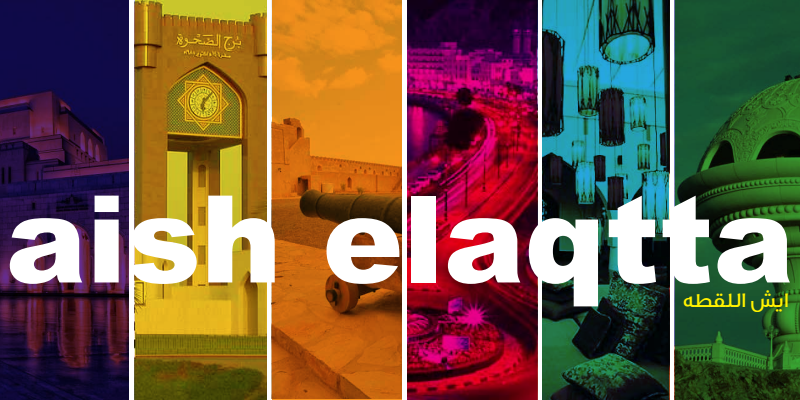 On highway #17 between Quriyat and Sur, 20 kms before Sur, one can see this sign on the highway.
On highway #17 between Quriyat and Sur, 20 kms before Sur, one can see this sign on the highway.
Qalhat is a tiny town and few people make it here. I know plenty of people who have been in Oman for years and have never taken the time to travel to Qalhat.
This sign is next to Wadi Qalhat. You can see the famous Bibi Mariam Tomb on the hill just above the palm trees. It was this site that brought me there on my recent journey.
Qalhat (like Muscat, Sohar and Quriyat) was an important trading city in the 14th and 15th centuries. They have found pottery and other artifacts from Persia and even from as far away as China. Qalhat remains on UNESCO’s tentative list of cultural heritage sites. Qalhat was Oman’s first capital!
It seems that the site is closed. No one was around to police it so I thought nobody would mind my exploring for a quick pic or two. It’s very hard to reach even up to this point up a very steep hill with the same warning sign on the bottom. You definitely need a 4X4 to explore the ruins of Qalhat. There is a parking area on the side of the main highway coming from Sur that allows distant shots of the site. You can see Highway #17 in the background!
Although the tourist sign reads “Ancient City of Qalhat” there is nothing left really. This tomb is virtually all that remains of a once thriving trade town. It is known as “The Tomb of Bibi Mariam“. Also called “The Mausoleum of Lady Mariam“. (“Bibi” means “lady” or “dame” from the ancient Arabic use of the word.)
Lady Mariam is said to have built a splendid mosque somewhere in Qalhat and some think that this ancient site is it. Others believe this to be her mausoleum with no clue as to where the mosque was (so for any aspiring archeologists out there, you could come over to Oman, do some exploring and go down in history as the one who found the ancient mosque of Qalhat. 🙂 ) Some believe this was both the mosque she built and the place where her body was placed. Ah, mysteries! 
Qalhat was visited by Marco Polo in the 13th century, but he refers to it as Calatu. Qalhat is also described by the famous Muslim traveler, Ibn Battuta, of the 14th century who was known as “the Marco Polo of the Muslim world“. Unknown to most westerners, this man is known as one of the greatest travelers of all time. He traveled to and described his journeys to more than 40 countries (predominately in the Islamic world) during a period of 30 years covering more than 75,000 miles.
I wonder when this site will be reconstructed and open to the public. Qalhat should have a small visitor’s centre/museum. They should also put more effort into archeological research here.
“underground is the crypt leading to underground corridors beneath the floor of the shrine…”
It would be fascinating to learn more about this place from someone with extensive knowledge of archeology. This could be a real addition to Oman’s tourism market is it were handled properly. Instead little or nothing is known or heard of Qalhat by the inquisitive tourists to the Sultanate.
Marco Polo wrote of Qalhat: “Calatu (his name for Qalhat) is a great city, within a gulf that bears the name of Calatu. It is a noble city, and lies 600 miles from Dhufar towards the northwest, upon the seashore. The people are Saracens and are subject to Hormos. And whenever the King of Hormos is at war with some prince more potent than himself, he betakes himself to this city of Calatu, because it is very strong, both from its positions and from its fortifications. They grow no corn there, but get it from abroad, for every merchant vessel that comes brings some. The haven is very large and good, and is frequented by numerous ships with goods from India, and from this city the spices and other merchandise are distributed among the cities and towns of the interior. They export also many good Arab horses to India. For as I have told you before the number of horses exported from this and other cities to India is something astonishing“.
Ibn Battuta described Qalhat with these words: “The city of Qalhat is on the coast. It has good markets, and one of the most beautiful mosques in the world. The walls of the mosque are covered with blue ceramic tiles. It stands on a hill beside the harbour. This mosque was built by an important woman named Bibi Maryam. The people here are merchants , and they bring many goods from India. When a ship arrives the people are very happy “.
These are the remains of Qalhat’s ancient water cistern
 So many ruins, so many questions, so few answers!
So many ruins, so many questions, so few answers!
It is said that the destruction of Qalhat was due mainly to an earthquake in the 14th century. (read this on an Omani tourism site)
A look down at modern day Qalhat from the archeological hill site
Qalhat LNG (operated by PDO) runs out of Qalhat, Oman. They have a great description of the glory of Qalhat’s past on their website.
This final pic is of the ancient site of Qalhat as seen from highway #17 (with a 55-250mm zoom lense) coming from the direction of Sur driving towards Quriyat/Muscat.











